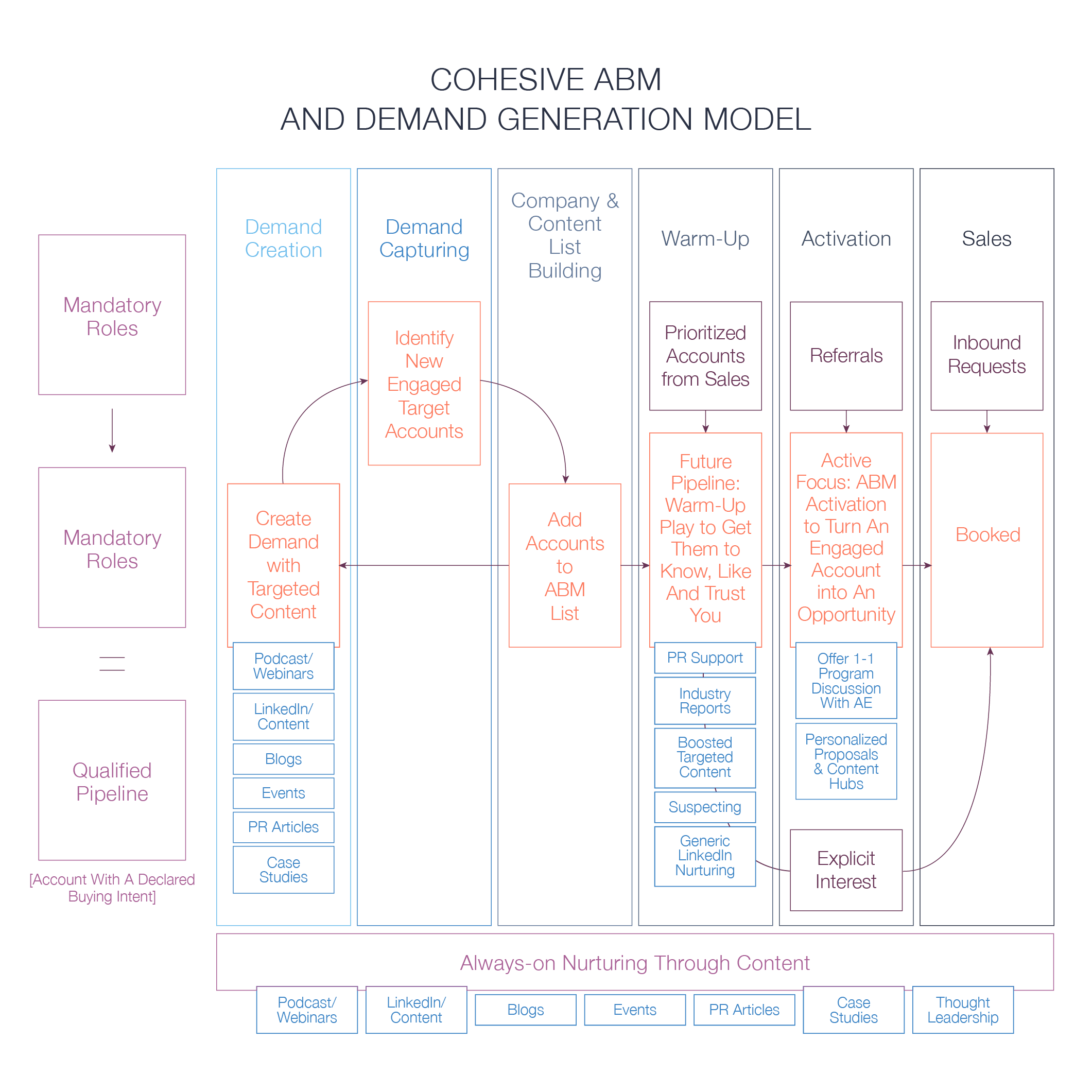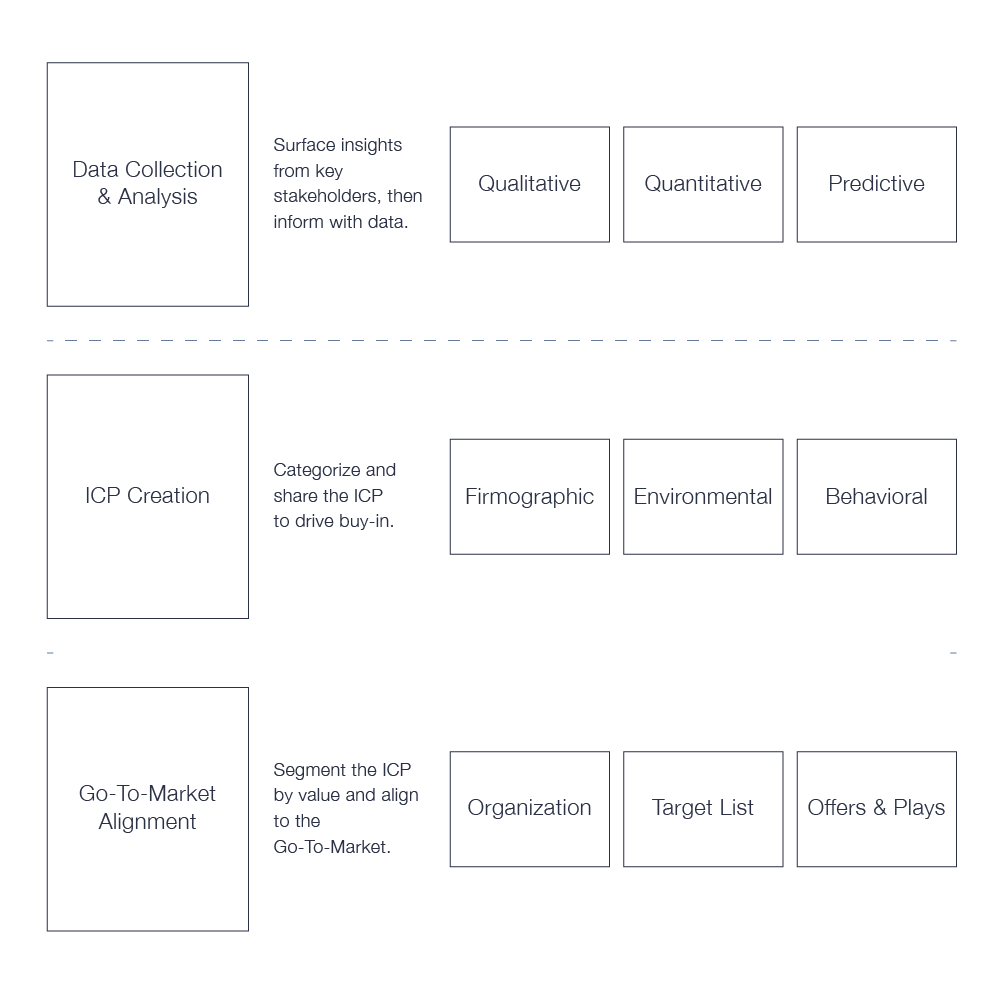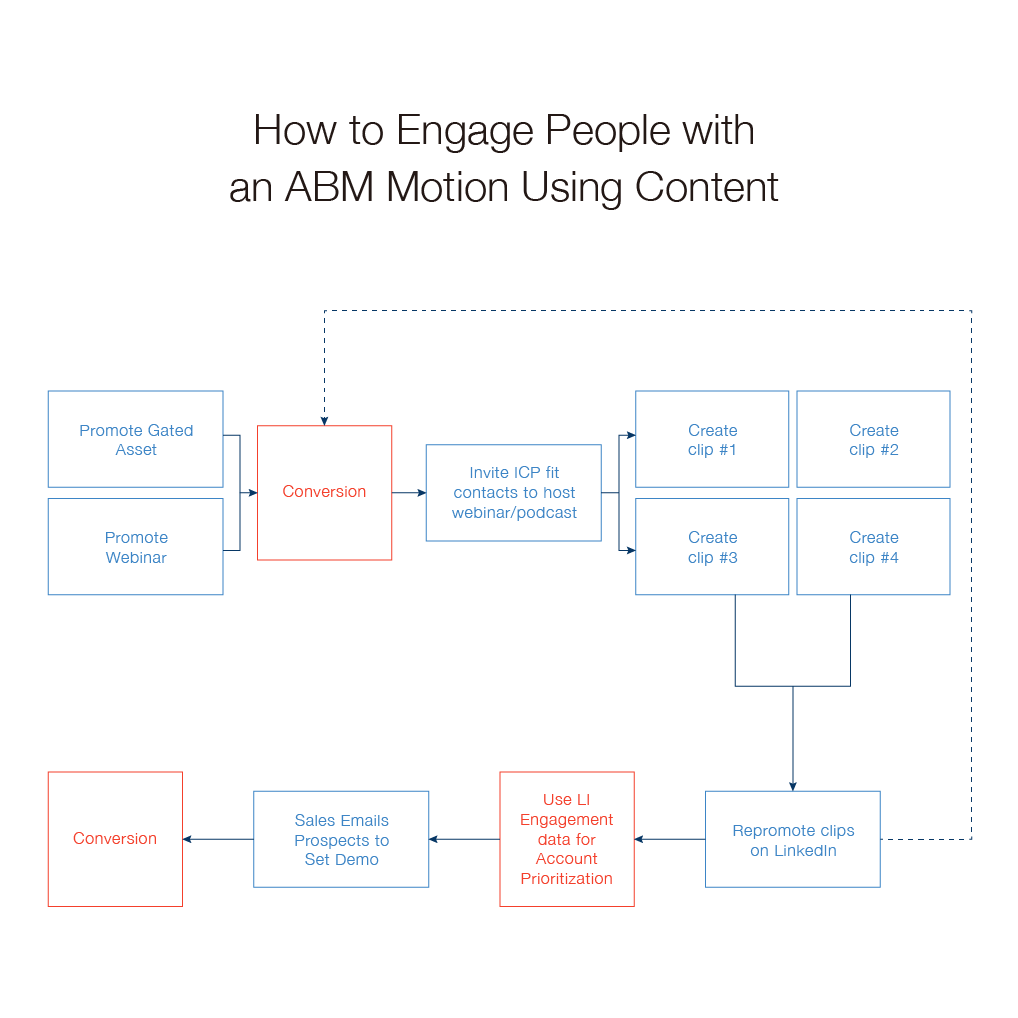Looking to improve your Account-Based Marketing (ABM) strategy? Our top 10 account based marketing tips will guide you in targeting high-value accounts with precision and effectiveness.
From understanding the basics to leveraging the right tools and strategies, this article covers it all. Dive in to enhance your ABM campaigns and achieve higher engagement and conversion rates.
Key Takeaways
-
Account-Based Marketing (ABM) focuses on targeting high-value accounts with personalized strategies, leading to deeper engagement and higher conversion rates.
-
Aligning sales and marketing teams is crucial for successful ABM campaigns, improving customer acquisition and revenue growth through cohesive strategies.
-
Utilizing ABM tools and measuring performance through metrics enables marketers to optimize their efforts, enhance efficiency, and ultimately build stronger customer relationships.
Understand the Basics of Account-Based Marketing

Account Based Marketing (ABM) is a specialized strategy within account-based marketing that concentrates resources on engaging a select group of high-value accounts, treating each one as its own distinct market. ABM contrasts with broad-spectrum traditional marketing methods by focusing on personalized tactics aimed at designated accounts rather than appealing to the masses. This focused approach fosters greater engagement and improves the likelihood of converting prospects into customers.
What sets ABM apart is its emphasis on personalization. By aligning your marketing initiatives with the specific challenges and requirements of each key account, you can forge stronger relationships and achieve superior outcomes. Traditional B2B marketing techniques tend to dilute efforts across an extensive audience. In contrast, ABM channels those efforts into targeted actions that carry more weight. Your B2B marketing team has the opportunity to craft campaigns richly pertinent to key decision-makers among your target accounts through strategic resource allocation.
Understanding these fundamental principles paves the way for a prosperous venture into Account-Based Marketing (ABM). It prioritizes refining every point of contact and enhancing the efficacy of your based-marketing strategies overall. With this groundwork established, you are well-prepared for delving deeper into pinpointing and approaching specific high-value accounts effectively.
Identify Key Accounts for Targeting
The cornerstone of an effective ABM strategy is the meticulous selection of your target accounts. Initiating this process requires crafting a detailed Ideal Customer Profile (ICP) that takes into account factors such as compatibility with the product and likelihood to purchase. Your ICP acts as a guideline for pinpointing which accounts are expected to provide substantial returns and correspond with your company goals.
While considering firmographics like organization size and sector is important when assessing potential target accounts, these should not be exclusive determinants. ABM agencies study patterns in historical data from previous engagements can reveal trends indicative of high revenue potential in future accounts, to ensure your account-based marketing campaigns achieve success. Analyzing prior interaction histories delivers vital metrics that enhance the precision of your targeting efforts by focusing on those who have previously shown interest in what you offer.
Putting emphasis on targeting high-value accounts can lead to increased income generation. Hence it’s crucial to give precedence to those demonstrating expansion capabilities and strong alignment with your brand values. It’s paramount that you periodically revisit and refresh your list of targeted accounts so they remain relevant amidst market shifts or changes within organizational aims—guaranteeing a continual focus on marketing towards only the most lucrative prospects.
By identifying key influencers and purchasers within these organizations, you can customize each engagement based specifically upon their unique needs while addressing specific challenges they face. This focused method doesn’t just conserve effort, but also optimizes chances for successful conversions, bolstering both efficacy and productivity within your overall ABM strategy.
Align Sales and Marketing Teams
To execute an ABM strategy effectively, it is crucial to have a cohesive marketing and sales team. Organizations that successfully align these teams are three times more likely to achieve their customer acquisition objectives. When marketing and sales alignment is realized, companies can see up to 19% growth in revenue and a boost in profitability by 15%.
It’s essential for the marketing and sales teams to work together when selecting target accounts as this promotes unity of purpose and enhances the overall impact of marketing efforts. Consistent meetings between these teams should be prioritized to review critical metrics and coordinate strategies effectively. Using centralized communication platforms can also help prevent miscommunication by keeping everyone informed on key developments.
Implementing strong sales enablement practices strengthens the link between your sales team members are all on board with updated information.
Develop a Personalized ABM Strategy

At the heart of any successful ABM strategy is the practice of personalization. Crafting content and propositions that are specifically designed to meet the needs of individual target accounts significantly boosts both engagement and conversion rates. The goal of personalization within ABM is to cater directly to each target account’s unique challenges and requirements.
By leveraging intent data, you can identify which accounts are showing signs indicative of purchase readiness, positioning them as ideal recipients for intensified personalized marketing efforts. Creating dedicated landing pages for these individual accounts enhances interaction by increasing relevance significantly. Personalized materials such as specialized guides, webinars, and case studies intensify the effectiveness of your marketing campaigns by delivering crucial insights tailored to resolve particular issues faced by your target accounts.
Targeted advertising should mirror the specific interests and industry hurdles encountered by your target accounts in order to amplify engagement levels further. Constant experimentation with various messages and value proposals is essential in honing your personalization tactics while assuring sustained efficacy across all ABM initiatives—building a bespoke experience per account cultivates more robust and financially rewarding connections.
Establishing an individually-focused ABM plan means ensuring that every component aligns perfectly with what resonates most amongst targeted businesses—this strategic alignment fosters richer interactions alongside superior rates at which those engagements lead to conversions—the fundamental element for tapping into AMB’s true capabilities fully.
Utilize Account Based Marketing Tools
Utilizing appropriate account based marketing (ABM) tools can greatly enhance the performance and productivity of your marketing efforts. These ABM tools are designed to streamline repetitive processes, enabling your team to dedicate their energies towards more complex strategic tasks. An instance illustrating this benefit is VersionOne’s adoption of the Terminus platform, which automated their content distribution and led to a substantial 45% increase in the average value of opportunities while engaging with an impressive 88% of their target accounts.
Account based advertising instruments play a critical role by precisely delivering custom advertisements directly to selected accounts across diverse media platforms. They guarantee that your promotional messages are seen by key individuals at opportune moments, optimizing the reach and impact of your account based marketing campaign. The application of such tools simplifies overall account-based marketing endeavors, allowing for improved outcomes with reduced exertion.
Incorporating these specialized ABM tools into your tactical approach promises significant improvements in both efficiency and efficacy within your campaigns. Thus empowering you to craft bespoke experiences that resonate powerfully with specific accounts you aim to connect with through targeted efforts.
Create Relevant Content for Each Stage of the Buyer’s Journey
It’s essential to produce content that aligns with every phase of the buyer’s journey to facilitate their progression through your sales cycles effectively. The buyer’s journey is typically segmented into three key stages: awareness, consideration, and decision. Each stage demands unique types of content tailored to its specific needs.
During the initial awareness stage, prospects should be engaged with educational materials such as blog entries and social media posts designed to highlight common issues they may face while introducing them to the solutions you offer. When buyers reach the consideration stage, it’s important to provide more detailed resources like reports and webinars that demonstrate your authority in the field and assist them in weighing their options comprehensively.
In order for prospects at the decision-making stage to be convinced successfully, compelling formats such as case studies and video testimonials can illustrate tangible benefits experienced by other customers using your services or products. By synchronizing your crafted material with each step of a potential buyer’s path toward purchase, you ensure timely delivery of pertinent information, easing their passage through your sales process which enhances conversion chances significantly.
Leverage Direct Mail Campaigns
Incorporating direct mail campaigns into your ABM strategy can be immensely effective. Direct mail is employed by 46% of marketers as part of their ABM strategies to bolster engagement with key accounts, leading to a higher win rate according to over half of the marketers surveyed. Companies that have well-developed ABM strategies report a significant increase in investment returns when they include direct mail.
Crafting highly personalized direct mail pieces can leave a lasting impression on customers and elevate engagement levels substantially. This one-to-one method tailors packages specifically for each decision-maker within the target account, ensuring maximum interaction. It’s essential for these tailored pieces to contain an explicit call-to-action so recipients are prompted towards taking intended actions.
By harnessing the power of customized direct mail campaigns within an ABM framework, you create compelling experiences tailor-made for your target accounts which result in increased rates of both engagement and conversion.
Measure and Optimize Your ABM Efforts
Optimizing and evaluating your ABM strategies is crucial for securing optimal outcomes. By focusing on accounts with the highest potential revenue, Account-Based Marketing strives to deliver a superior ROI. Essential indicators to assess ABM success include the Total Addressable Market (TAM), Account Engagement Score, and Customer Lifetime Value (CLV).
The proportion of key decision-makers engaged within target accounts is gauged by the Account Penetration Rate, whereas the progression rate tracks how effectively these accounts navigate through the purchasing journey. A reduction in Sales Cycle Length may signify successful personalized ABM campaigns. Calculating Customer Acquisition Cost (CAC) is vital for determining how cost-effective it is to gain new customers via account-based marketing efforts.
Employing data analytics platforms plays an integral role in monitoring and assessing your account-based marketing campaigns’ performance over time. Continuously reviewing these metrics enables you to pinpoint areas that need enhancement and fine-tune your approach to improve overall efficiency in achieving abm goals.
Foster Strong Customer Relationships
The fundamental objective of Account-Based Marketing (ABM) is to cultivate robust connections with key decision-makers within chosen target accounts, aiming to propel the expansion of the business. Elevating customer satisfaction and nurturing allegiance are critical components achieved by reinforcing strong customer relationships. The establishment of trust plays a pivotal role in this process, where tailored interactions play an instrumental part in engendering brand champions.
Elevated engagement scores with high-value accounts indicate sturdy ties with these selected targets. By harmonizing Customer Relationship Management (CRM) systems alongside ABM platforms, businesses gain enhanced control over managing those crucial customer bonds while also gaining valuable insights. Leveraging direct mail can be particularly effective for engaging existing customers when exploring opportunities for both cross-selling and upselling.
Prioritization on fostering relationship building leads to enduring partnerships that catalyze persistent growth in revenue as well as bolstered brand allegiance.
Share Account Based Marketing Success Stories

Case Studies and Account Based Marketing Examples
Real-world examples of successful ABM campaigns provide valuable insights and inspiration. Salsify’s targeted messaging and personalized follow-ups helped exceed their registration goals for an event, illustrating the power of tailored outreach in driving engagement and conversions.
DocuSign’s ABM strategy used customized ads based on industry specifics, resulting in significant increases in engagement and sales pipeline. Such targeted campaigns showcase the effectiveness of personalized advertising in reaching and converting high-value accounts.
GumGum’s creative approach with personalized comic books for T-Mobile’s CEO is another standout example. This one-to-one ABM campaign secured a meeting with the CEO and went viral, highlighting the impact of innovative, personalized marketing tactics.
Circulating triumphant narratives from your ABM initiatives can serve as a source of encouragement and enlightenment for both your personnel and other companies. For instance, Thomson Reuters orchestrated close to 700 events aimed at bolstering brand credibility and recognition, attaining an impressive 95% success rate in their sales interactions with pivotal accounts. The substantial number of events was instrumental in fostering rapport and trust among key stakeholders.
Similarly, GumGum’s cutting-edge AR-driven campaign on behalf of Clorox resulted in a marked uptick in attendance at their yearly marketing gathering, highlighting the power of immersive marketing experiences. Effective account based marketing strategies such as this provide concrete instances that may spur companies to amplify their own ABM endeavors.
By sharing these anecdotes, one underscores the promising capabilities of account-based marketing while spurring others to delve into and adopt analogous tactics within their organizations.
Summary
To summarize, Account-Based Marketing (ABM) presents an effective method for pinpointing and engaging with high-value accounts through tailor-made tactics that bolster engagement and conversion rates. Grasping the fundamental principles, pinpointing critical accounts, synchronizing efforts between sales and marketing teams, as well as crafting bespoke strategies can immensely boost your marketing campaigns.
Bear in mind that enduring success in ABM is rooted in persistent evaluation and refinement of strategies, nurturing robust customer bonds, and gleaning insights from triumphant campaigns. Adhering to these guidelines sets you on a trajectory towards transforming your approach to marketing and realizing significant business expansion.
Frequently Asked Questions
What is Account-Based Marketing (ABM)?
Account-Based Marketing (ABM) is a powerful strategy that zeroes in on high-value accounts, treating each one as a unique market.
By personalizing your approach, you can drive deeper connections and greater success.
How do I identify key accounts for ABM?
To identify key accounts for Account-Based Marketing (ABM), define your Ideal Customer Profile (ICP) and assess firmographic data, engagement history, and revenue potential.
This focused approach will help you target the accounts with the highest likelihood of success.
Why is sales and marketing alignment important in ABM?
Sales and marketing alignment is crucial in ABM because it ensures both teams are working towards the same goals, significantly boosting the effectiveness of your strategies.
When united, they can drive better results and achieve greater success together!
What types of content should I create for each stage of the buyer’s journey?
Concentrate on creating educational blog entries and manuals that cater to the audience at the awareness phase, while providing thorough comparison tables and online seminars tailored for those in the consideration stage. For individuals reaching the decision phase, compelling case studies or endorsements should be offered.
Employing this strategy will efficiently steer your audience through their purchasing journey!
How do I measure the success of my ABM campaigns?
To measure the success of your ABM campaigns, focus on key metrics such as Total Addressable Market (TAM), Account Engagement Score, Customer Lifetime Value (CLV), and Customer Acquisition Cost (CAC).
Keeping an eye on these metrics will empower you to refine your strategy and achieve greater results!
